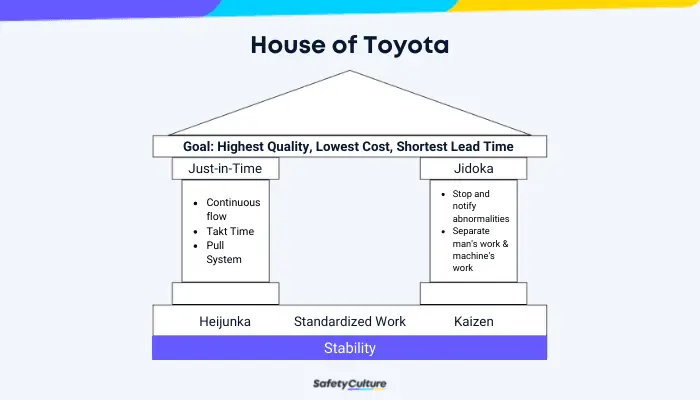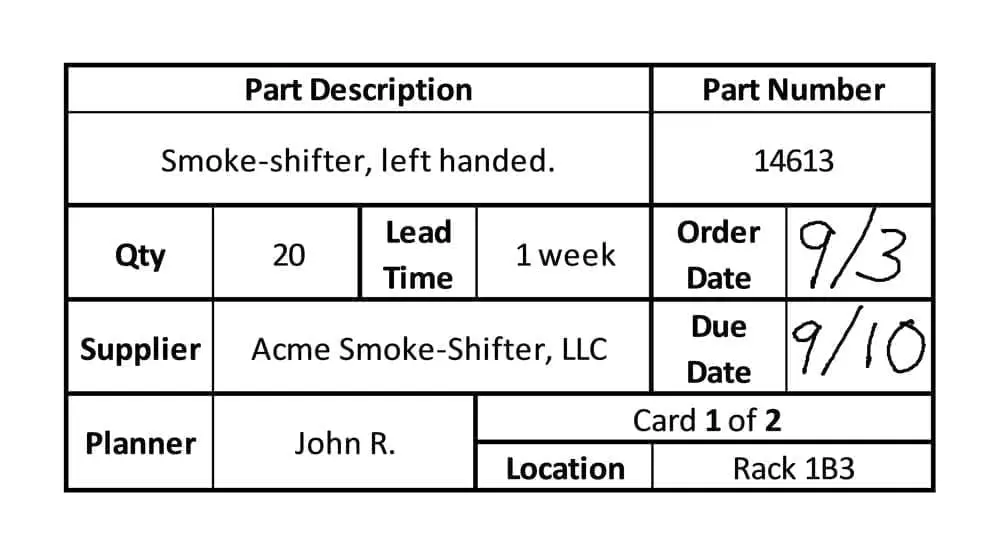Traditional Inventory Management
We are used to seeing boxes piling up in warehouses or in storage rooms of businesses. This is one way business owners make sure that they’ll be able to meet the demands of their customers. They keep supplies in their inventories even if they do not know what will be the demand for it. Some companies can have too much inventory, while others do not have enough.
Businesses have traditionally managed inventory by maintaining stock levels of products to meet emergencies and unexpected demand. The same goes for most manufacturers when creating goods and products. This kind of inventory management businesses—keeping large amounts of inventory—causes waste.
The following are the disadvantages of the traditional inventory system:
- Waste of space—pertaining to large amounts of inventory kept in warehouses and which may be a waste of space.
- Waste of working capital—pertaining to unnecessary purchasing of supplies and accumulation of inventories that sometimes end up as idle funds and cannot earn a proper rate of return on its investment. It often results in inventory mishandling, waste, theft, and losses.
- Waste of inventory—pertaining to inventory that is left untouched, waiting to be used, and becomes a waste eventually.
To avoid these wastes, businesses are now beginning to turn to Just-in-Time (JIT) Inventory Management.
Digitize the way you Work
Empower your team with SafetyCulture to perform checks, train staff, report issues, and automate tasks with our digital platform.
Get Started for FreeWhat is Just-in-Time (JIT)?
Just-in-time is an inventory management system that focuses on manufacturing and delivering only what is needed, when it is needed, and how much is needed just in the time it was actually demanded. JIT manufacturing was initially known as the Toyota Production System (TPS).
JIT aims to eliminate the 7 Waste or the “7 Mudas” of lean manufacturing:
- Overproduction—pertains to excessive production of goods that can cause all other types of wastes and excess inventory when unused.
- Inventory—pertains to the waste produced by unprocessed inventory.
- Motion—pertains to the movements that are wasted that could have been used for other purposes.
- Defects—pertains to the products that don’t meet the customer’s expectations and may end up being discarded.
- Over-processing—pertains to adding something that is unnecessary in a product
- Waiting—pertains to time wasted when staff or equipment wait for a task to be completed.
- Transport—pertains to the unnecessary moving of materials from one place to another.
The goal of TPS is to provide the highest quality, the lowest cost, and the shortest lead time to meet the customer’s satisfaction. The TPS was established based on two concepts:
- Jidoka—translated as, “automation with a human touch,” which means that when an irregularity occurs, a machine must be stopped immediately to prevent the manufacturing of defective products
- Just-in-Time—making only “what is needed, when it is needed, and in the amount needed”
Elements of JIT
JIT manufacturing system is based on the Japanese production leveling system called “Heijunka”. It is composed of three fundamental elements which can be seen in the “House of Toyota” illustration: Takt time, continuous flow production, and the Pull system.

House of Toyota
- Takt time—pertains to how quickly you must produce a product to meet a customer’s demands. For example, if a new product order comes in every 22 minutes, your team must finish it in 22 minutes or less.
- Continuous flow—pertains to the process of moving one product through each step of your process rather than grouping products into batches. This concept in JIT was also called one-piece flow.
- Pull system—pertains to commencing new work only when there is demand for it. Pull means only giving the customer what they need. One type of this scheduling system is Kanban which is usually in the form of cards.
Kanban
Kanban, or physical inventory control cues, is a Japanese scheduling system that is commonly used in combination with lean manufacturing and JIT. It is a system in which only the inventory needed at that moment is replenished. In order to track production and order new shipments of replacement parts as they become available, Kanban cards are used.

Example of a Kanban Card | Source: Interlake Mecalux
Advantages of Using JIT
Industries that practice JIT management system benefit from the following:
Reduce Inventory Waste
A just-in-time strategy minimizes overproduction, which can result in an accumulation of unsaleable inventory. These unsaleable items are categorized as inventory dead stock, which results in waste and takes up valuable warehouse space.
With the JIT system, businesses order only what they need, eliminating the chance of stockpiling unusable goods.
Spend Less on Raw Materials
Companies will also spend less money on raw materials with the JIT system because they just buy what they need to manufacture the products ordered.
Lessen Warehouse Room and Production Floors
JIT reduces the amount of time that you need to retain items in your warehouse by as much as possible. Because inventory turns over more quickly, you can reduce the amount of warehouse or storage space required to store goods.
Reduce Expenses for Keeping Inventories
Excess inventory can double storage costs. A just-in-time approach keeps warehouse holding expenses low. Because you only order when a consumer orders, your item is sold before it arrives to you, eliminating the need to store it. Businesses that adopt a just-in-time inventory system can greatly reduce or eliminate their warehouse inventory.
Further, utilizing processes that create a cost-efficient approach for businesses and logistics providers—such as cargo consolidation—can also help reduce inventory expenses.
Use Local Sourcing
Because JIT demands commencing production only when an order arrives, you must source raw materials locally. Local sourcing also saves time and costs on transportation.
Implement Just-in-Time with SafetyCulture
Adopt the JIT inventory management system to reduce waste, cut costs, and empower your team to become more efficient. To support these goals, invest in digital technologies. Use SafetyCulture (formerly iAuditor), one of the best apps for inventory management, to manage your stocks more efficiently than with the traditional way of paper-based inventories.
The following are ways SafetyCulture can help you implement the JIT system in your inventory management:
- Gather data and information such as order, quantity, shipping, warehousing, purchases, reorders, goods in storage, receiving, stock turnover, and whatever else is needed in your Kanban cards using the General Inventory Checklist efficiently.
- Report order issues, unexpected changes, and disruptions in the supply chain with the capture issues feature.
- Record and list raw materials on stock and check for unused or defective materials using the Raw Materials Inventory Template Checklist.
- Take advantage of the secure cloud system feature that enables virtual sharing of data among team members from any location quickly and efficiently in real-time.



